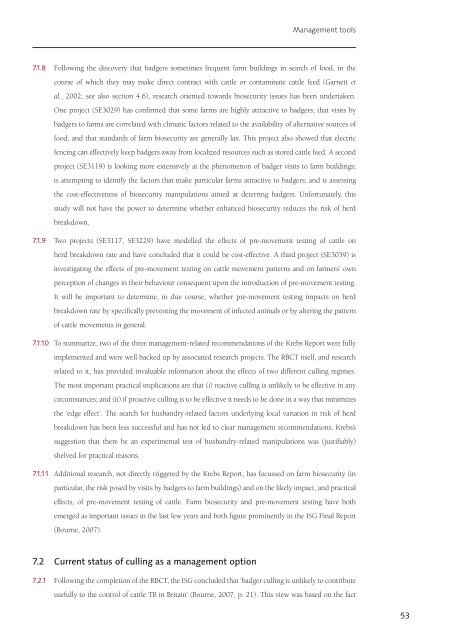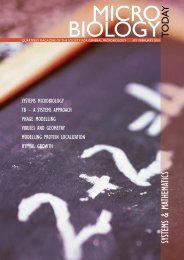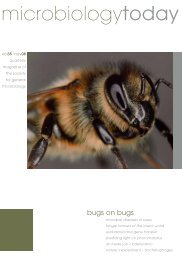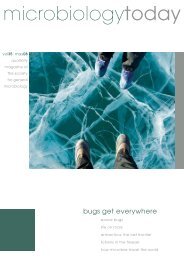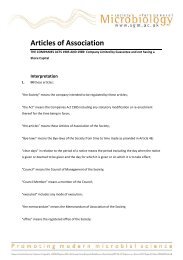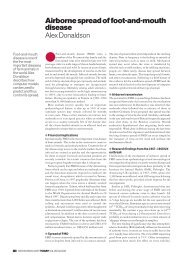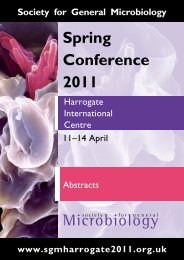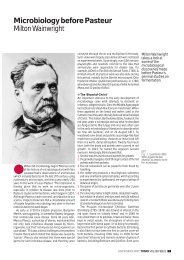final report - ARCHIVE: Defra
final report - ARCHIVE: Defra
final report - ARCHIVE: Defra
You also want an ePaper? Increase the reach of your titles
YUMPU automatically turns print PDFs into web optimized ePapers that Google loves.
Management tools<br />
7.1.8 Following the discovery that badgers sometimes frequent farm buildings in search of food, in the<br />
course of which they may make direct contract with cattle or contaminate cattle feed (Garnett et<br />
al., 2002; see also section 4.6), research oriented towards biosecurity issues has been undertaken.<br />
One project (SE3029) has confirmed that some farms are highly attractive to badgers; that visits by<br />
badgers to farms are correlated with climatic factors related to the availability of alternative sources of<br />
food; and that standards of farm biosecurity are generally lax. This project also showed that electric<br />
fencing can effectively keep badgers away from localized resources such as stored cattle feed. A second<br />
project (SE3119) is looking more extensively at the phenomenon of badger visits to farm buildings;<br />
is attempting to identify the factors that make particular farms attractive to badgers; and is assessing<br />
the cost-effectiveness of biosecurity manipulations aimed at deterring badgers. Unfortunately, this<br />
study will not have the power to determine whether enhanced biosecurity reduces the risk of herd<br />
breakdown.<br />
7.1.9 Two projects (SE3117, SE3229) have modelled the effects of pre-movement testing of cattle on<br />
herd breakdown rate and have concluded that it could be cost-effective. A third project (SE3039) is<br />
investigating the effects of pre-movement testing on cattle movement patterns and on farmers’ own<br />
perception of changes in their behaviour consequent upon the introduction of pre-movement testing.<br />
It will be important to determine, in due course, whether pre-movement testing impacts on herd<br />
breakdown rate by specifically preventing the movement of infected animals or by altering the pattern<br />
of cattle movements in general.<br />
7.1.10 To summarize, two of the three management-related recommendations of the Krebs Report were fully<br />
implemented and were well backed up by associated research projects. The RBCT itself, and research<br />
related to it, has provided invaluable information about the effects of two different culling regimes.<br />
The most important practical implications are that (i) reactive culling is unlikely to be effective in any<br />
circumstances; and (ii) if proactive culling is to be effective it needs to be done in a way that minimizes<br />
the ‘edge effect’. The search for husbandry-related factors underlying local variation in risk of herd<br />
breakdown has been less successful and has not led to clear management recommendations. Krebs’s<br />
suggestion that there be an experimental test of husbandry-related manipulations was (justifiably)<br />
shelved for practical reasons.<br />
7.1.11 Additional research, not directly triggered by the Krebs Report, has focussed on farm biosecurity (in<br />
particular, the risk posed by visits by badgers to farm buildings) and on the likely impact, and practical<br />
effects, of pre-movement testing of cattle. Farm biosecurity and pre-movement testing have both<br />
emerged as important issues in the last few years and both figure prominently in the ISG Final Report<br />
(Bourne, 2007).<br />
7.2 Current status of culling as a management option<br />
7.2.1 Following the completion of the RBCT, the ISG concluded that ‘badger culling is unlikely to contribute<br />
usefully to the control of cattle TB in Britain’ (Bourne, 2007, p. 21). This view was based on the fact<br />
53


